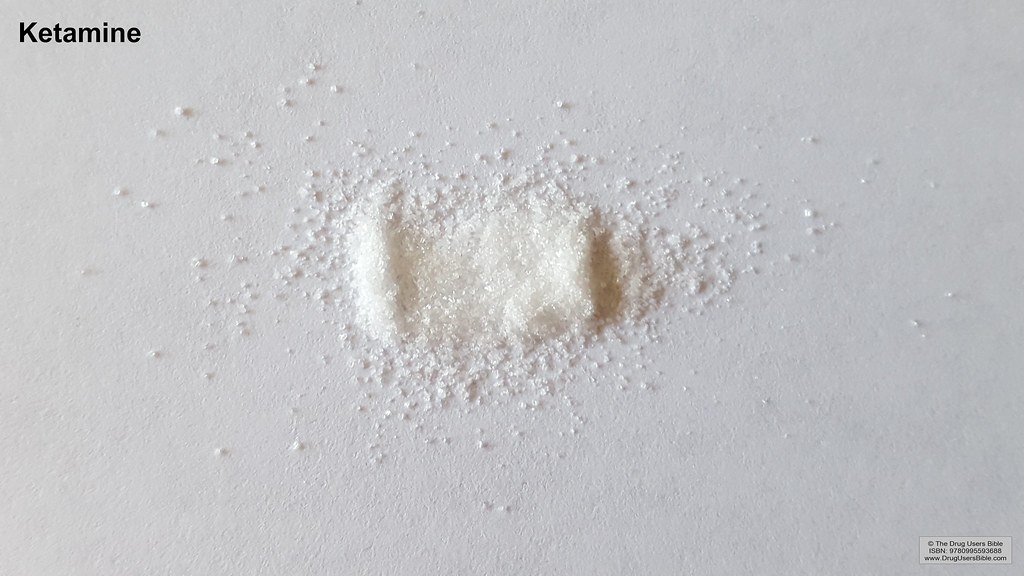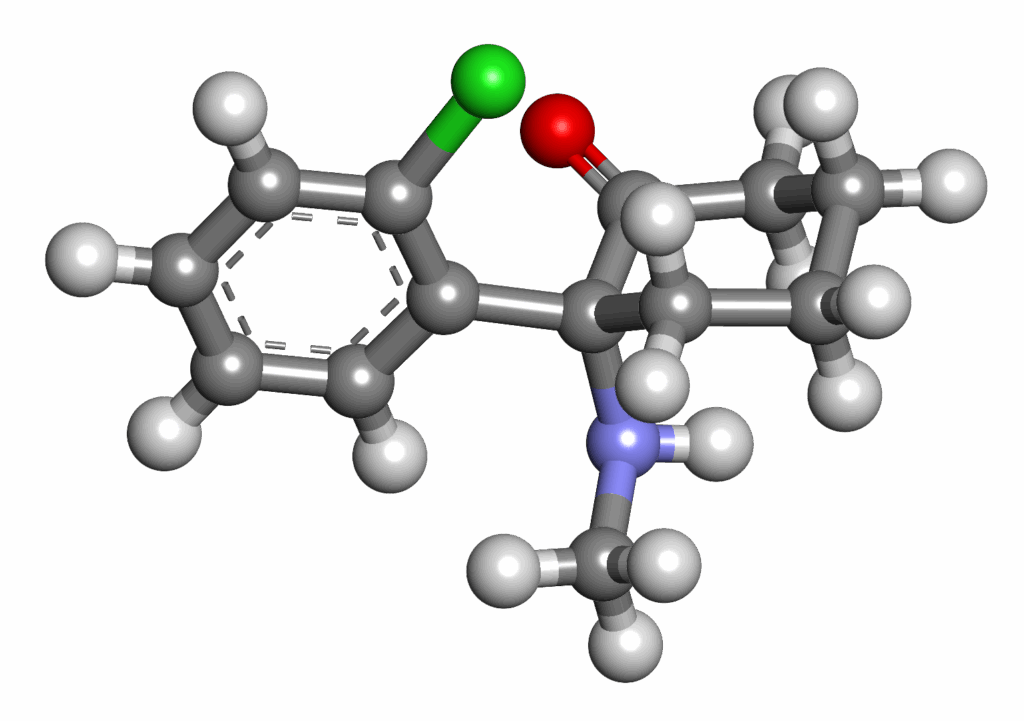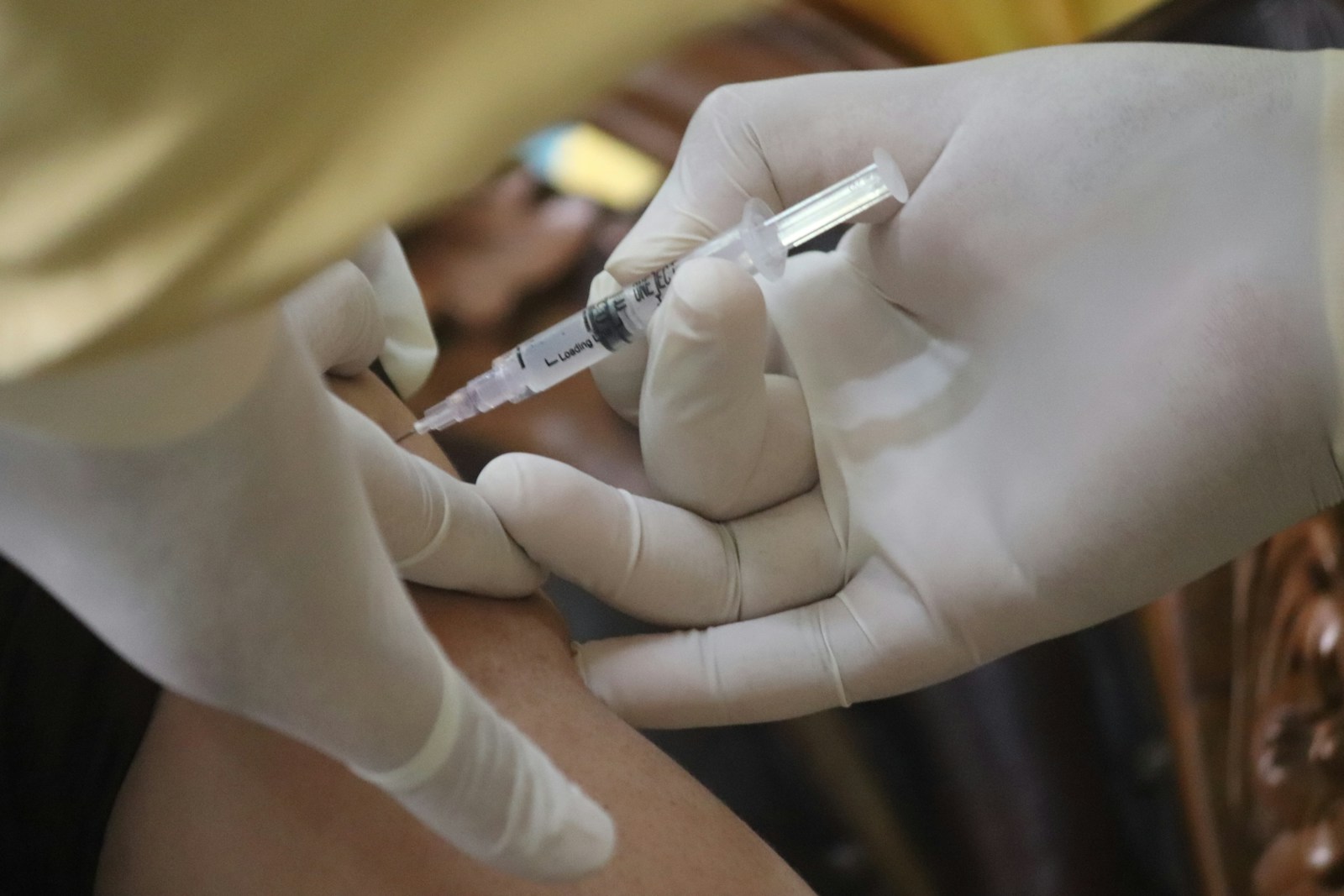
The sudden death of Matthew Perry, beloved by millions for his indelible portrayal of Chandler Bing on “Friends,” sent shockwaves across the globe in October 2023. At 54 years old, his passing ignited an outpouring of grief and a profound curiosity into the circumstances surrounding it, particularly given his well-documented public struggles with addiction. Initial reports confirmed his death at his Pacific Palisades home, leaving many questions unanswered as the Los Angeles County Medical Examiner’s Office embarked on a comprehensive investigation.
Months later, the official autopsy report provided a definitive, yet complex, account of what transpired, ruling his death an accident attributed to the acute effects of ketamine. This medical finding, coupled with the subsequent announcement of charges against five individuals in connection with supplying the drug, has peeled back layers of a deeply personal tragedy that intersects with public health concerns and the insidious nature of addiction. The narrative that has emerged is one of vulnerability, exploitation, and the profound societal impact of a life lost too soon.
As a renowned actor, Perry left an extraordinary cultural footprint, yet he passionately articulated a desire for his legacy to extend beyond the comedic brilliance of “Friends.” His candid honesty about his battles with substance abuse and his fervent commitment to helping others navigate similar struggles positioned him as a powerful advocate. This article delves into the intricate details of his death, the findings of the investigation, and the broader implications for understanding addiction and accountability, all while honoring the multifaceted life of a man who touched so many.

1. **The Definitive Cause of Death: Acute Ketamine Effects**: The Los Angeles County Medical Examiner’s report delivered a stark conclusion: Matthew Perry died from the acute effects of ketamine. This finding, released on Friday, specified that the levels of ketamine found in his postmortem blood specimens were remarkably high, ranging from 1,000 to 6,000 nanograms per milliliter, comparable to levels typically associated with general anesthesia. The report emphasized that at these elevated concentrations, the primary lethal outcomes would have been severe cardiovascular overstimulation coupled with significant respiratory depression.
The official ruling of the manner of death as an accident underscores the unexpected nature of the tragedy. Authorities had previously stated that there were no signs of foul play at the scene when first responders arrived at Perry’s home. The identification of ketamine as the immediate cause clarifies the physiological cascade that led to his passing, providing a critical piece of information in a case that had garnered international attention and speculation.
This specific identification of ketamine highlights the potent and potentially dangerous nature of the substance, especially when present at supra-therapeutic or recreational levels. The investigation meticulously analyzed the chemical components within his system, leading to a precise medical explanation for the devastating outcome. It brought a sobering clarity to a situation shrouded in initial mystery, refocusing public discourse on the drug itself and its broader implications.

2. **Unraveling the Contributing Factors: Drowning, Coronary Artery Disease, and Buprenorphine**: While acute ketamine effects were identified as the primary cause, the autopsy report listed several significant contributing factors that exacerbated the fatal outcome. Drowning was cited due to the high likelihood of Perry lapsing into unconsciousness and subsequently being submerged in the pool where he was found. This environmental factor played a crucial role once the primary effects of the ketamine began to manifest, incapacitating him.
Coronary artery disease was also noted as a contributing factor. The medical examiner indicated that this pre-existing condition would have been exacerbated by the ketamine-induced myocardial effects on the heart. Ketamine’s impact on the cardiovascular system, when combined with an underlying heart condition, created a more perilous physiological state, hastening the progression to a fatal event.
Furthermore, the presence of buprenorphine at “therapeutic” levels was considered another contributing factor. Buprenorphine, an opioid-like drug utilized in the treatment of opioid addiction and pain management, adds to respiratory depression when combined with high levels of ketamine. While not the immediate cause, its synergistic effect amplified the risks associated with the ketamine in Perry’s system, illustrating a complex interplay of substances and health conditions that culminated in the tragic accident.

3. **The Discovery and Initial Investigation: A Scene Without Foul Play**: Matthew Perry’s body was discovered unresponsive in his jacuzzi on October 28, 2023, by a witness, later identified as his live-in personal assistant. The Los Angeles City Fire Department responded to the scene at Perry’s Pacific Palisades home and pronounced him deceased at approximately 4:17 p.m. The initial assessment by law enforcement sources quickly concluded that there were no signs of foul play, allowing the medical examiner’s office to proceed with the autopsy to determine the official cause of death.
According to his autopsy report, the assistant had left Perry’s house for several hours to run errands after Perry returned from playing pickleball. Upon returning at 4 p.m., the assistant found Perry “face-down in the jacuzzi.” A bystander had reportedly brought his head above water and moved him to the edge before firefighters arrived. These details paint a clear picture of the immediate aftermath, emphasizing the accidental nature of the discovery rather than any deliberate act.
The absence of foul play was a critical initial finding that guided the subsequent investigation. While prescription drugs and loose pills were found at his home, the report explicitly noted that nothing was found close to the pool where he was discovered. Furthermore, toxicology reports confirmed that alcohol, methamphetamine, cocaine, heroin, PCP, and fentanyl were not detected in his system, narrowing the focus to ketamine and buprenorphine as the central substances involved in his passing.

4. **The Paradox of Ketamine Therapy: A Treatment Turned Fatal**: The autopsy report also shed light on Matthew Perry’s medical history, noting his engagement in ketamine infusion therapy for depression and anxiety, with his most recent session reportedly occurring one and a half weeks before his death. This information initially led to questions about the drug’s role in his system. However, the medical examiner provided a crucial clarification: the high levels of ketamine found at the time of his death could not have stemmed from this prescribed therapy.
The reason for this distinction lies in ketamine’s short half-life, which is typically 3 to 4 hours or less. This scientific fact meant that any ketamine from a therapeutic infusion administered over a week prior would have been metabolized and cleared from his system long before his death. The presence of the drug at such high, lethal levels, therefore, indicated a separate, more immediate intake, though the method of this intake was listed as unknown in the initial report.
This critical detail shifted the focus from the legitimate use of ketamine as a potential therapeutic agent, albeit one not fully approved by the FDA for psychiatric conditions, to its illicit or unmonitored use. It highlighted the dangerous discrepancy between therapeutic applications and the context in which the fatal dose was acquired and administered, forming a central component of the subsequent criminal investigation into drug supply.

5. **Matthew Perry’s Enduring Legacy: Beyond Chandler Bing, A Champion for Sobriety**: While Matthew Perry achieved global fame and adoration for his iconic role as Chandler Bing on “Friends,” which ran from 1994 to 2004, he openly expressed a profound desire for his legacy to transcend his acting career. In a 2022 interview on the “Q With Tom Power” podcast, Perry articulated his aspiration: “When I die, I don’t want ‘Friends’ to be the first thing that’s mentioned. I want [helping people] to be the first thing that’s mentioned, and I’m gonna live the rest of my life proving that.”
This statement revealed the depth of his commitment to sobriety and his unwavering dedication to assisting others grappling with addiction. Beyond the comedic timing and memorable catchphrases that defined his on-screen persona, Perry invested considerable energy and personal experience into advocating for recovery. He became a beacon of hope for many, demonstrating that even those in the public eye face intense personal battles and can emerge with a renewed purpose.
His advocacy was not merely rhetorical; Perry actively engaged in tangible efforts to support the recovery community. He established a sober house, providing a safe and structured environment for individuals seeking to overcome addiction. “If they’ve gone through anything close to what I went through, I can come in and help,” he remarked, underscoring his belief that his lived experience uniquely positioned him to connect with and guide others towards a path of healing.

6. **The Memoir: A Candid Look at a Life-Long Battle**: Matthew Perry further illuminated his personal struggles in his 2022 memoir, “Friends, Lovers, and the Big Terrible Thing.” In this raw and unflinching account, he bravely shared the intricate details of his decades-long battle with alcohol and prescription painkillers. The book provided a window into the origins of his addiction, revealing that it was initially triggered after a doctor prescribed him Vicodin following a jet ski accident, spiraling into a dependency that shaped much of his adult life.
The memoir was a testament to his courage and his profound commitment to transparency, offering an intimate portrayal of the devastating impact addiction had on his career, relationships, and health. He chronicled the numerous attempts at sobriety, the relapses, and the constant, arduous fight for recovery. By sharing his vulnerability, Perry sought to demystify addiction and reduce the stigma often associated with it, making his narrative both powerful and universally relatable to those facing similar challenges.
In a “20/20” interview with Diane Sawyer, Perry explicitly stated his motivation for publishing such a personal account: he hoped to “help as many people as I can” by speaking out about his struggles. This act of profound generosity underscored his commitment to his chosen legacy, transforming his personal pain into a source of solace and guidance for countless others. The memoir stands as a lasting testament to his resolve to turn his darkest moments into a beacon of hope.

7. **Charges Filed: An Underground Network Exposed**: In a significant development following the initial autopsy findings, five individuals were charged in connection with Matthew Perry’s death. Prosecutors alleged that these individuals exploited Perry’s known vulnerability as an addict, supplying him with the ketamine that ultimately led to his demise. This legal action revealed the existence of what authorities described as an “underground network” of drug sellers and suppliers, operating with a disturbing disregard for the consequences.
The individuals charged included two doctors, Perry’s live-in personal assistant, a person referred to by authorities as the “Ketamine Queen,” and a man identified as a go-between in the illicit distribution chain. US Attorney Martin Estrada, in announcing the charges, stated that the defendants “took advantage of Mr. Perry’s addiction issues,” painting a picture of deliberate exploitation rather than incidental involvement. This highlighted a serious criminal dimension to Perry’s tragic passing.
Investigators believed that Perry had “fell back into addiction” in the fall leading up to his death, providing a context for how such a network could prey on his vulnerability. The charges not only seek to hold those responsible accountable but also send a powerful message about the legal ramifications for individuals who supply dangerous substances, particularly to those struggling with substance use disorders. It underscores the broader societal challenge of controlling illicit drug markets and protecting vulnerable individuals.
The initial findings and Perry’s personal legacy set the stage for a deeper inquiry into the circumstances surrounding his death, particularly the alleged network that supplied the fatal substance. The subsequent legal actions have brought to light the intricate roles played by various individuals, painting a comprehensive picture of exploitation and the devastating consequences of addiction, even as Perry reportedly sought a path to lasting recovery. This section meticulously details the involvement of those charged, examines the complexities of ketamine, and reflects on the actor’s state of mind leading up to his untimely passing.

8. **Kenneth Iwamasa: The Personal Assistant’s Alleged Role**: Kenneth Iwamasa, Matthew Perry’s live-in personal assistant for over 25 years, stands accused of a central role in the procurement and administration of the ketamine that led to the actor’s death. His LinkedIn profile describes him as a talent manager and executive assistant who is “discreet, loyal and honor(s) absolute confidentiality,” traits that may have been exploited in the alleged scheme. According to court documents, Iwamasa was entrusted with “various responsibilities” related to Perry’s medical care, including scheduling appointments and ensuring the proper intake of “lawfully prescribed” medication, a position of trust that prosecutors contend was profoundly breached.
The allegations detail a disturbing timeline of Iwamasa’s involvement. Beginning in late September 2023, he reportedly initiated contact with Dr. Salvador Plasencia regarding a ketamine supply and later coordinated with Erik Fleming to acquire further quantities of the drug. Perry was allegedly present at the first of these meetings, indicating a direct connection to the actor’s desire for the substance. Iwamasa’s plea agreement outlines that during the final week of Perry’s life, he injected the actor with at least 27 shots of ketamine, with at least three doses administered on the very day of Perry’s death.
The specifics of the fatal day are particularly harrowing. Iwamasa is alleged to have injected Perry at approximately 8:30 a.m. and again around 12:45 p.m. on October 28, 2023. Approximately 40 minutes after the second injection, Perry reportedly requested Iwamasa prepare a jacuzzi and asked, “Shoot me up with a big one.” After this third injection, Iwamasa left to run errands, returning to find Perry “face-down in the jacuzzi.” Following the discovery, Iwamasa allegedly informed Fleming that he had “cleaned up the scene” by removing drugs and paraphernalia and deleting evidence of the illicit transactions. Iwamasa pleaded guilty on August 7 to one count of conspiracy to distribute ketamine causing death.

9. **Dr. Mark Chavez: The Source of Fraudulent Prescriptions**: While Dr. Mark Chavez never personally met Matthew Perry, his alleged actions were nonetheless critical to the illicit drug supply chain. Prosecutors contend that Chavez supplied Dr. Salvador Plasencia with the ketamine that ultimately reached Perry, utilizing a fraudulent prescription. Chavez, 54, a physician with a medical degree from the David Geffen School of Medicine at UCLA, advertised “tailored health services” aimed at “helping his clients obtain optimum health and longevity through personalized coaching,” a stark contrast to his alleged involvement in the illicit distribution of a controlled substance.
Chavez’s entanglement with ketamine appears to have originated from his affiliation with Dreamscape Ketamine. According to his plea agreement, an argument with his business partner in July 2023 led Chavez to take all prescription drugs from the facility, including ketamine, citing his partner’s lack of medical credentials. While some drugs were lawfully transferred to another medical facility, Chavez allegedly retained other substances, including ketamine lozenges and at least 12 vials of liquid ketamine, laying the groundwork for their diversion into the black market.
Remarkably, the Drug Enforcement Administration (DEA) and the Medical Board of California had already initiated an investigation into Chavez prior to Perry’s death. This inquiry stemmed from Chavez’s alleged falsehoods regarding the transfer of his liquid ketamine supply and his claim that lozenges had melted in his vehicle. As of this writing, Chavez remains under investigation by the state medical board, although his license remains active through June 2026. He has agreed to plead guilty to one count of conspiracy to distribute ketamine, a legal development that sheds further light on the illicit medical pathways through which controlled substances can be diverted.

10. **Erik Fleming: The Distributor and Purveyor of Concealment**: Erik Fleming, 54, is identified as the individual who distributed the ketamine directly responsible for Matthew Perry’s death. Prosecutors allege that Fleming, an acquaintance of Perry through a mutual friend, actively sought to supply the actor with the drug. Initial text messages from Fleming to Perry on October 4, 2023, offered to sell ketamine, with a follow-up on October 10 specifying liquid ketamine. While the plea agreement does not confirm Perry’s response to these direct offers, Fleming soon pivoted to communicating with Kenneth Iwamasa, Perry’s assistant, with whom he began negotiating prices for the substance.
The illicit transactions quickly escalated. A few days after their initial contact, Fleming reportedly delivered a sample vial to Iwamasa. This was followed by a substantial sale on October 14, where Fleming provided 25 vials of ketamine for $5,500. Two additional sales of a similar magnitude reportedly occurred in the days leading up to Perry’s death. These transactions, according to Fleming’s plea agreement, indicate a consistent and significant supply of ketamine being funneled to Perry’s assistant, establishing a clear pattern of distribution through Fleming.
In the aftermath of Perry’s death, Fleming’s actions turned to alleged concealment. His plea agreement reveals discussions with Jasveen Sangha and Iwamasa about deleting messages to hide their drug deals. A particularly telling text from Fleming to Sangha stated his belief that “90% sure everyone is protected. I never dealt with (Perry). Only his Assistant. So the Assistant was the enabler,” betraying an attempt to shift blame and distance himself from direct involvement with the deceased. Fleming has since pleaded guilty to one count of conspiracy to distribute ketamine and one count of distribution of ketamine resulting in death.
11. **Jasveen Sangha: The Alleged “Ketamine Queen”**: Jasveen Sangha has been identified by authorities as the “Ketamine Queen” of North Hollywood, a moniker that suggests a significant role in the illicit drug trade. US Attorney Martin Estrada described her operation as a “drug selling emporium” run from her home, implying a sophisticated and extensive network of distribution. According to Erik Fleming’s plea agreement, he began reaching out to Sangha by mid-October, explicitly seeking to purchase vials of ketamine on Matthew Perry’s behalf, firmly placing Sangha at a critical nexus of the alleged supply chain.
Sangha faces a litany of charges, to which she has pleaded not guilty. These include one count of conspiracy to distribute ketamine, one count of maintaining a drug-involved premises, one count of possession with intent to distribute methamphetamine, one count of possession with intent to distribute ketamine, and five counts of distribution of ketamine. These multiple counts highlight the breadth of her alleged involvement in drug trafficking, underscoring the severity of the charges brought against her in connection with Perry’s death.
The legal proceedings have also illuminated concerns regarding Sangha’s flight risk. A judge revoked a bond she held from a prior, unrelated charge, ordering her to remain in detention. Prosecutors argued that Sangha posed a “significant risk to flee,” citing her extensive international travel history, her dual United States and British citizenship, and the belief that she was funding her lifestyle through drug sales. These factors suggest a deliberate and well-resourced operation, further emphasizing the organized nature of the alleged drug network that supplied Matthew Perry.

12. **Dr. Salvador Plasencia: Exploitation for Profit**: Dr. Salvador Plasencia’s alleged involvement in Matthew Perry’s death is characterized by prosecutors as an act of deliberate exploitation. Approximately one month before Perry’s passing, Plasencia reportedly became aware of the actor’s interest in purchasing ketamine and subsequently contacted Dr. Mark Chavez. US Attorney Martin Estrada explicitly stated that “Defendant Plasencia saw this as an opportunity to profit off of Mr. Perry,” citing a September 2023 text message from Plasencia that read, “I wonder how much this moron will pay?” This cynical remark reveals a purported motivation driven by financial gain rather than patient welfare.
Plasencia, according to prosecutors, expressed a desire to be Perry’s sole supplier. Over several weeks, he allegedly purchased ketamine from Chavez, then sold vials of the drug to Perry’s assistant, Kenneth Iwamasa. Furthermore, Plasencia is accused of teaching Iwamasa how to administer the drug, effectively deputizing an untrained individual in the medical application of a powerful anesthetic. His direct involvement extended to personally dropping off ketamine at Perry’s home and, in one instance, injecting the drug into Perry in the back of a vehicle in a parking lot, demonstrating a disregard for professional medical standards.
The most alarming allegation against Plasencia details an incident on October 12, where he purportedly “administered a large dose” of ketamine to Perry. This dose allegedly caused an “adverse medical reaction,” manifesting as a significant spike in Perry’s systolic blood pressure and leaving him frozen, unable to speak or move. Plasencia has pleaded not guilty to one count of conspiracy to distribute ketamine, seven counts of distribution of ketamine, and two counts of altering and falsifying documents related to the federal investigation. His trial is scheduled for October 8, with his medical license allowing him to continue practicing, albeit with restrictions on prescribing controlled substances and a requirement for patients to acknowledge his pending federal case.

13. **Ketamine: Medical Application Versus Recreational Misuse**: The tragic circumstances of Matthew Perry’s death have thrust ketamine into the public spotlight, highlighting the critical distinction between its legitimate medical applications and its dangerous recreational misuse. Ketamine hydrochloride, approved by the U.S. Food and Drug Administration (FDA) for inducing and maintaining general anesthesia via intravenous or intramuscular injection, is a powerful dissociative anesthetic. However, the FDA has not approved ketamine for psychiatric treatment, and the agency has issued warnings that unapproved uses “may place the patient at risk for serious adverse events, misuse, and abuse.”
As a dissociative anesthetic hallucinogen, ketamine “distorts the perception of sight and sound and makes the user feel disconnected,” according to the U.S. Drug Enforcement Administration (DEA). The DEA further warns that “an overdose can cause unconsciousness and dangerously slowed breathing,” a risk tragically realized in Perry’s case. Historically, ketamine first gained interest as a counterculture drug in the 1970s and re-emerged as the club drug “Special K” in the 2000s, underscoring its long-standing presence in illicit drug markets alongside its medical utility.
Neuroscience studies offer insights into ketamine’s complex effects, suggesting it targets the neurotransmitter glutamate rather than dopamine or serotonin, thereby promoting the brain’s ability to create lasting, new lifestyle patterns. While some experts have speculated that the dissociative experience of a ketamine “trip” might contribute to reducing depressive symptoms, there remains no direct evidence that the psychedelic properties directly affect mood. Dr. Alexander Papp, a board-certified psychiatrist, notes that some of his patients have attributed their improved outlook to these psychedelic properties, yet the scientific consensus emphasizes the need for caution and rigorous research, especially given the risks associated with unmonitored or supra-therapeutic use.

14. **Matthew Perry’s Reported Well-Being Before His Death**: Adding a profound layer of poignancy to Matthew Perry’s death is the revelation that, in the period leading up to his passing, he was reportedly in a positive and hopeful state. Close friends and associates paint a picture of a man actively engaged in his recovery journey and optimistic about his future. Jennifer Aniston, his former “Friends” co-star, shared a deeply touching account, stating, “He was happy. He was healthy. He had quit smoking. He was getting in shape. He was happy — that’s all I know. I was literally texting with him that morning, funny Matty. He was not in pain. He wasn’t struggling.” This testimony suggests a stark contrast between his outward presentation and the insidious forces at play beneath the surface.
Further corroboration of his efforts towards sobriety comes from the autopsy report itself. It noted that Perry had a “history of chronic obstructive pulmonary disease/emphysema, diabetes; drug use in past — reportedly clean for 19 months.” Critically, toxicology reports conducted after his death confirmed that “Alcohol, methamphetamine, cocaine, heroin, PCP, fentanyl were not detected” in his system. These findings reinforce the narrative of an individual who had made significant strides in overcoming a long and public battle with substance abuse, demonstrating a formidable commitment to maintaining his sobriety for an extended period.
The image of Matthew Perry as happy, healthy, and engaged in a pickleball game on the day he died, only to be found face-down in his jacuzzi hours later, creates a devastating tableau. It underscores the immense vulnerability of individuals grappling with addiction, even when they appear to be winning their personal battles. This tragic dichotomy—a life seemingly on a positive trajectory, yet ultimately ensnared by a lethal substance allegedly supplied through exploitation—serves as a powerful and somber reminder of the complexities of addiction, the responsibilities of those around vulnerable individuals, and the ever-present dangers of illicit drug networks. His passing, in this context, becomes not merely a celebrity’s death, but a stark illustration of broader societal challenges and the enduring pain of unspoken grief.
The intricate details surrounding Matthew Perry’s passing, from the specifics of his toxicology to the alleged criminal network that exploited his vulnerabilities, coalesce into a narrative of profound tragedy. His life, marked by both extraordinary success and deeply personal struggles, ended in circumstances that highlight the ongoing battle against addiction and the dire consequences of illicit drug trade. As the legal proceedings unfold, the hope remains that justice will be served, and that Perry’s outspoken advocacy for sobriety, a legacy he so earnestly wished for, will continue to resonate, offering solace and guidance to others confronting similar demons. His story, in all its complexity, serves as a poignant reminder of the fragility of life and the urgent need for compassion and accountability in addressing the pervasive challenges of substance abuse.




